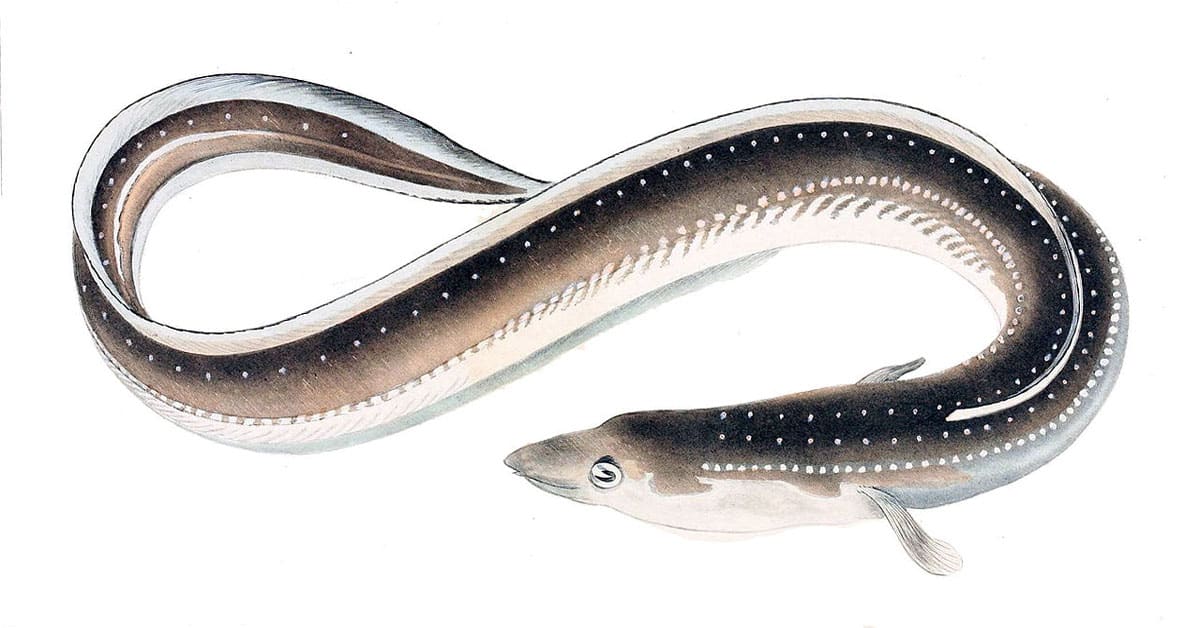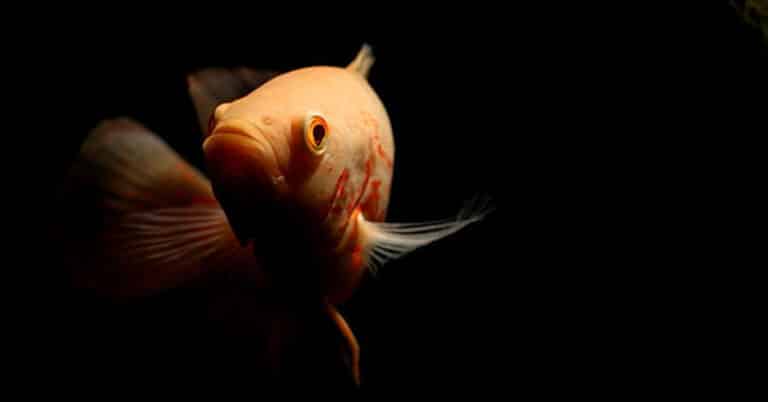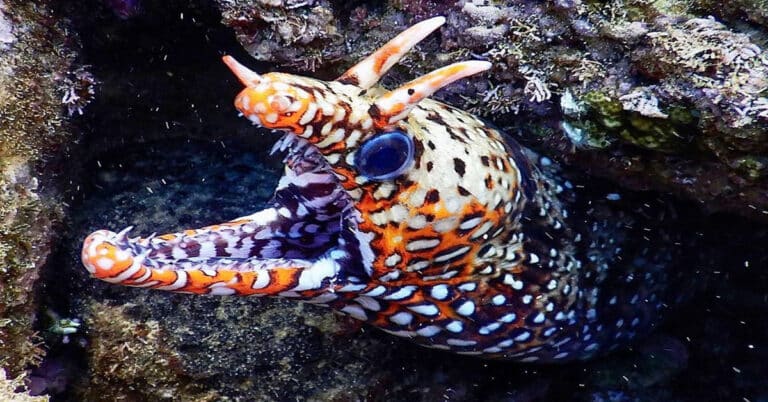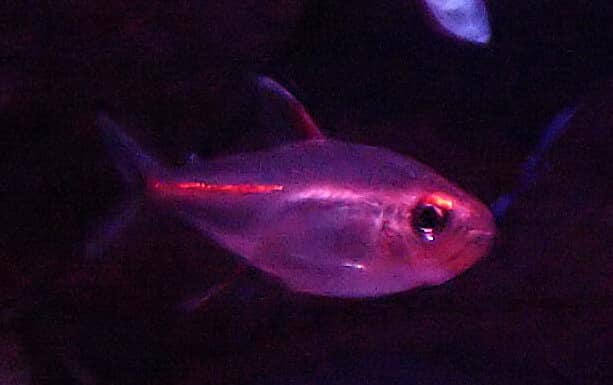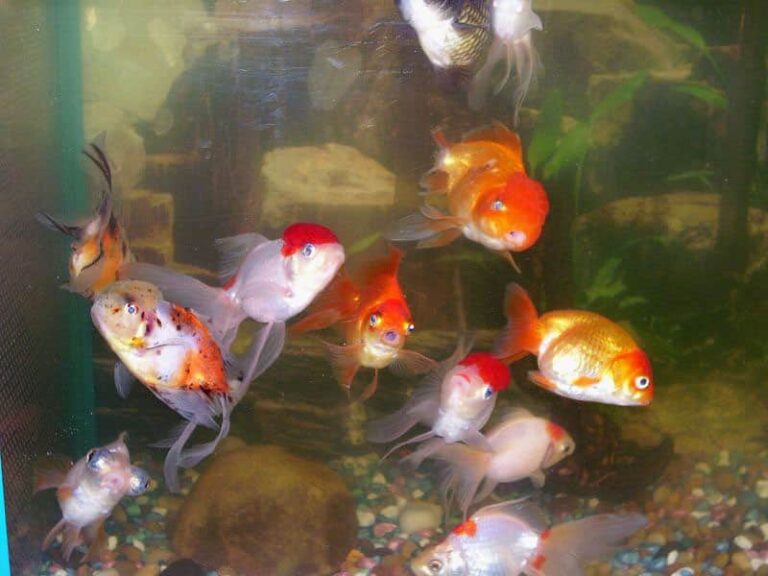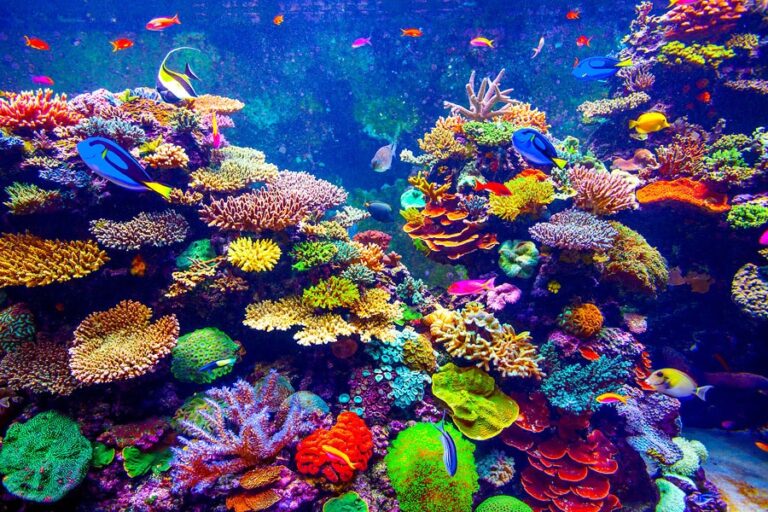Eel Life Cycle – Extraordinary & Strange
Fish called eels have long, thin bodies. The Anguilliforme family of fish, which includes over 800 different species of eels, is found all over the world. The eel life cycle is extremely fascinating, and it starts with lengthy migrations after starting as floating larvae. Eels are predatory fish that may live up to 80 years.
If you are curious about the eel life cycle and want to learn more about its development, you are reading the right article! Below, we will explore the fascinating eel life cycle.
What Do Eels Look Like?
Before we actually move on to exploring the eel life cycle, let’s discuss what those creatures look like. Species differ from one another in terms of length, color, mouth shape, and fins. Wolf eels, a kind of wolffish, have paired pectoral fins and gill slits that distinguish them from real species, whereas lampreys have mouths with funnel-like structures and teeth.
All have lengthy bodies that resemble snakes or worms, though, and they all have a modified tail fin that combines the dorsal and anal fins. They also have powerful jaws and tiny, pointed teeth. Many of these creatures lack pectoral fins, and none have pelvic fins. Due to the larvae’s transparency, they are known as “glass eels.” The phrase refers to the period of a fish’s life from hatching to adulthood, not a particular kind of fish.
Migration Habits & Distribution
The majority of eel species spend their whole lives in saltwater, and all eel species are born in tropical marine settings. The majority of the 19 species in the genus Anguilla that migrate into freshwater areas spend their whole lives there before returning to the sea to breed. It is now recognized that several species of eels that were previously believed to only live in saltwater settings may occasionally be found in estuaries and rivers.
Eels are thought to have developed in Asia’s tropical oceans before migrating to temperate areas. The aquatic environments in which they may presently be found include coastal waters, the deep ocean, the oceanic water column, and continental shelves. To breed, all species travel back to the tropics where they first appeared
The majority of eel species migrate across great distances between their habitats for spawning and growth. Larvae that move in ocean currents to tropical spawning sites signal the start of migrations. Juveniles continue to migrate across great distances because their long, slender bodies are well-suited for them.
Different species migrate to various habitats, such as coastal, deep marine, pelagic, or freshwater environments, in various geographical locations, such as Europe, America, Asia, Australia, and Africa.
For migration to be beneficial, the eel’s chances of survival and reproduction must be increased. The advantages of moving must outweigh the expenses of doing so. Benefits may include better and more plentiful food or a more pleasant environment in which to live. Migration may be physically taxing. Therefore the rewards must be significant to justify the effort.
Stages Of Eel Life Cycle
The eel life cycle is quite fascinating. As they develop from an embryo to an adult, they go through four phases of transformation. They live in two different settings depending on the course of development of the eel life cycle. Specifically, in continental settings with fresh water, and in oceans with salty water. The egg first grows into a larval, and the larvae eventually transform into nymphs known as “leptocephalus.”
Depending on the species, eels have different life spans. American eels have a minimum lifespan of five years and can live up to 20 years in rare cases. European eels in captivity have been known to survive for over 80 years, however, it is unknown how long they might live in the wild.
Eel Life Cycle Up Close
Once the eel life cycle reaches the silver eel stage, every individual eel and the species on the earth travel to a single location to breed. For example, the Japanese eel goes to The Suruga Seamount, a region east of Guam, which is close to this place.
The significance of this area has only lately come to light. For the time being, all we know is that the position increases their ability to enter the Kuroshio current, a strong ocean circulation that takes them right to the coastal regions where they are typically found. The adult eels pass away after the eggs are deposited.
The river carries the leptocephali, a translucent, paper-thin larva that emerges from the eggs. Before the eels reach freshwater, this procedure takes somewhere between 1 and 5 years. At some point during the voyage, they change into glass eels, which are still translucent but more elongated and eel-like at some point throughout the voyage.
They transform into elves, which are smaller copies of the adult form, once they reach freshwater. They develop into adult yellow eels during the following two years. Before they mature into silver eels and return to the ocean to reproduce, they live as yellow eels for five to twenty years. As you can see, a fish has a complicated and apparently endless life cycle.
Leptocephalus
Leptocephalus larvae have an extraordinarily lengthy lifespan for fish larvae, which is more than two years. The leptocephalus is translucent, flattened, and resembles a leaf. Leptocephali of American and European eels that are less than 5 mm long are found between 50 and 300 m deep both during the day and at night. This can also be an indication of the depth at which eels spawn.
Daily vertical movements are carried out by larger leptocephali, and the amplitude of these migrations grows with body size. Those 5–20 mm-long particles drop from 100–150 m depths during the day and 50–100 m depths at night. Those >20 mm long are clustered at 125–250 m during the day and 30–50 m at night.
Leptocephali of American, European, and Japanese eels are gradually transported westward south of the subtropical convergences of the Atlantic and Pacific Oceans, according to the classical theory of their horizontal migration.
The North Equatorial Current is responsible for moving the Japanese leptocephali westward. Leptocephali’s trajectories are influenced by deeper geostrophic currents as well as wind drift because they migrate vertically at night, moving into the Ekman layer.
Based on assumed daily rings in otoliths, the length of the larval life of the eel life cycle is estimated to be only approximately 6-7 months, as opposed to 2 years or more in the traditional narrative. When the Leptocephalus larva is big enough, it transforms into a young glass eel. The glass eel is now smaller and cylindrical, yet it is still transparent. Glass eels grow and develop as they go to their adult homes, becoming pigmented elver eels and then fully grown adults.
How Do Eels Reproduce?
An adult eel starts swimming in the sea when it is ready to reproduce. The eel really stops feeding at this moment and stops digesting. It will only use its fat stores to power the trip.
They are highly persistent once they have started the voyage. In order to get past barriers or to reach other bodies of water, they can literally exit the water. They accomplish this by utilizing their lengthy, strong physiques. They can slither because they have evolved comparable characteristics to terrestrial snakes.
What Do Eels Eat In Different Stages of Life Cycle
They eat a range of meals, including almost any marine species that are smaller than themselves since they are carnivorous predators. Although they are skilled hunters, eels are also careful enough to avoid items that may harm them. Mollusks, crabs, and fish are eaten by eels.
Eels eat a variety of foods that differ depending on whether they are in freshwater or saltwater. In particular, in saltwater, eels have access to a broader range of marine animals than they do in freshwater, including more insects.
Elvers, or baby eels, ingest a variety of nutrients throughout their first few weeks of life, depending on where they live. They mostly consume insects and small freshwater fish. They are largely herbivorous at sea due to the lack of availability of insects, feeding on plankton until they are large enough to consume an adult diet.
Eels are adaptable predators that can live anywhere and consume a range of foods. Additionally, they frequently eat in various amounts given their environments. For instance, freshwater pet eels are frequently fed once a day, whereas saltwater eels are only fed three to four times each week on average.
Eels live in the wild and hunt whenever they are hungry. If food is rare, they can go for weeks without eating.
The eel life cycle applies to the majority of its species. The most hazardous species that are also great hunters include muraena, electric, conger, and fire. The electric eel can induce respiratory or cardiac failure in persons with underlying heart conditions, while the conger eel and muraena can pull humans with their powerful jaws and vicious fangs. The fire eel’s skin is poisonous.
Bottom Line – Eel Life Cycle
The eel life cycle is very fascinating and happens in two parts. Eggs and leptocephalus typically live in the salt-water ocean environment. As they move on to the next stages of the eel life cycle, those creatures move to the freshwater continental waters. Glass eels, elvers, and yellow eels live there. After the silver eel stage comes, they return to the saltwater areas to spawn and then start the eel life cycle all over.

Nato is a content writer and researcher with a background in psychology who’s eager to explore the wonders of nature. As a travel enthusiast and animal lover, she hopes to inspire others to discover and cherish the beauty and importance of the natural world.

